The Agony, the Ecstasy, the Renaissance Fantasy
Reviews of THE FAMILIAR, NAVOLA, and MY LADY JANE
I’m working on a larger piece about historical fantasy in general — why it exists, what goals it serves, whether it’s a marriage of concordant elements or a chimera inherently at war with itself. It was originally meant as a prologue to these reviews, but I wanted to devote a lot more research to such a piece than would fit here. Stay tuned.
THE FAMILIAR
Leigh Bardugo, Flatiron
The Familiar is a historical fantasy set during the 1580s, during the Spanish Golden Age relatively late in the Inquisition. At this point, Jews have been banished from Iberia for about a century — most emigrated a series of diasporas, though numerous families became conversos, accepting Christian baptism (though some continue to practice Judaism in secret). Luzia, our protagonist, is a descendent of conversos, and works as a scullery maid in Madrid.
When her mistress Valentina discovers — via burnt bread that mysteriously becomes edible again — that Luzia has a talent for milagritos, or “small miracles,” Luzia is thrown into a deadly game of courtiers who wish to use her powers for advancement. As it turns out, the Spanish crown is funding a torneo to identify the empire’s most powerful magic user, and the winner’s magic will be used to revive Spain’s struggling, post-Armada war with England. Luzia chafes at being used, and recognizes that participating in the torneo might expose her Jewish ancestry, but she’s drawn forward by ambition and the classic heroine’s convictions that she’s meant for something greater than subservience.1 She dreams of being “anywhere but here,” to be finally “seen.” If Inquisition Spain had a midnight train going anywhere, Luzia would be on it.
Overall, The Familiar is a good yarn, well-styled inside and out (my copy has an embossed foil cover, with black sprayed edges). In terms of prose, Bardugo has a good sense of restraint, picking out choice flashes of detail for a camera-zoom effect: a table set with “goblets, Venetian glass, wedding gifts,” a brazier “filled with coal instead of olive stones,” a statue of the Virgin Mary with two heads, “one happy and smiling, and one for more solemn occasions.” The characters are strongly typed, endearingly theatrical; like the stock figures of a folk drama, you can imagine them running about in their specific gaits and moods: the sour but lonely Valentina, the hearty but violent Don Victor, the eccentric playwright Quiteria, and Luzia’s melancholic love interest, the gaunt, El Greco-esque Santangel.2 The best scenes in the book are when Bardugo flits omnisciently throughout the household, showing figures’ intertwining lives and private mini-stories. (When Luzia has amazing sex, for instance, the magic she releases has an aphrodisiac effect on everyone.) Their humor and rapport feels real as well, and Bardugo is adept at capturing the irony and slyness that emerged within the early modern surveillance state: characters have a working sense of what irreverence they can get away with, and with whom. It’s easy to believe that The Familiar indeed takes place in the same world as Las Meninas or Don Quixote; it’s full of anxious figures in odd, geometric costumes, huddled in their manors at the edge of sere, strange landscapes.
The novel’s largest issues are structural. Specifically, the “tournament arc” — now a well-worn trope in fantasy — makes little sense within the context of a flailing Spanish war effort: why would the imperial machine, famous for its willingness to exploit human beings, constrain itself to selecting one magical champion, instead of conscripting all of them? In some throwaway scenes we learn that Luzia can use her magic to reproduce books instantly, letter for letter, and grow fruit from seed in a few seconds. She effectively renders the printing press — in fact, all manufacturing and agriculture — obsolete, but this ability is not considered by Luzia or her supervisors for any kind of application. The reveal that only speakers of Ladino and other marginalized languages can use magic feels odd, a bit romanticized (magic as a consolation prize?).3
Overall, Bardugo engages with the Spanish Inquisition more as a Hunger Games-style danger setting — one bad move and you die! and your family dies! — than as a complex system with varieties of people and motivations sustaining it. Despite ambient Catholic aesthetics, like Jesus and lambs and gilded saints’ icons, there’s little sense of Spain as a place of actual belief: personal spiritual opinions, orthodox or heretical, are hard to come by in any of the main characters. We don’t know what exactly they believe or why they would believe; “God” exists largely as a kind of Big Brother invoked by sterile villains and wild-eyed devotees.4 Despite the book’s positioning as a converso story, Bardugo makes little exploration of her heroine’s own religious ideas (or lack thereof) or how Luzia sees herself in relationship to Judaism or Christianity. It’s implied that she is vaguely Christian in practice (saying rote paternosters and attending mass); she has a murky memory of some Ladino prayers and songs.
Luzia’s agnosticism, or heterodoxy, or lack of concern about religion at all might have been interesting if elaborated — far more people in the past were likely agnostic/ambivalent/experimental/uncertain in their beliefs than were recorded — but we get very little insight to our protagonist. Bardugo is more focused on the converso identity as it relates to concepts like community, family, identity, and resilience, the handing down of traditions and language (Bardugo has emphasized her Sephardic family’s history with the Inquisition). But the fact that Luzia seems not to think about religion at all means that she’s oddly separated from the deep and personal questions that would have been inescapable during the 16th century. In the end, The Familiar feels as stripped of “matters of religion” as a censored early modern play.
Overall, The Familiar represents a school of upmarket fantasy novel for which the industry has seen significant demand in the past 10 years, whose key selling point is the delivery of moral lessons about real-world history by means of entertaining fantasy-adventure. These kinds of books differ from pure-fun historical fantasies like Temeraire or Abraham Lincoln: Vampire Hunter, which add fantasy trappings to history in a synergistic service of the rule of cool (“It’s Master and Commander but with dragons!”). They differ too from more serious forms of historical fantasy — such as Beloved, or or From Hell — that use speculative elements to enhance the sense of historicity, and honor stranger aspects of the psychological past.
Instead, these recent books fulfill the standard obligations of commercial Western fantasy (adventure, action, consumeability) whilst also serving as a surrogate form of historical learning. It’s essentially a hidden-vegetables genre: liberal readers of commercial fantasy are encouraged to feel enriched by reading such books, as though they’re part of the recuperation5 of important history (or, in post-2016 parlance, as though they are “doing the work” or “educating themselves”). Crucially, they are not required to alter their consumption habits in any way, or seek out any more complex or researched books.
This is not to say that these hybridizations represent cynicism or irreverence on the part of the authors; in fact, these novels are often heartfelt and conceived out of a sense of duty to right past injustices. (Leigh Bardugo, for example, says that writing The Familiar was a way to make the Spanish converso branch of her own family “bloom again.”) It’s understandable that when an author is an avid reader and consumer of a certain genre (e.g. mainstream fantasy), said genre will often become their first choice for articulating an unease with history or one’s complex relationship to it. But within the current model, this authenticity almost inevitably becomes part of the book’s packaging. In the end, it serves as a way to ease the disconnect that comes from fusing real, somber history with commercial fantasy and its ultimately trivial preoccupations.
NAVOLA
Paolo Bacigalupi, Knopf
Given the aforementioned popularity of historical fantasy, it makes artistic sense for Paulo Bacigalupi, an accomplished sci-fi author, to step into the ring. I first encountered Bacigalupi’s writing as a kid, when I read a fucked-up story of his, “The Fluted Girl,” in a year’s best anthology. It was one of my first exposures to dark, psychosexual sci-fi, and haunted me for awhile. In college, I had to read some fiction from his Windup Girl universe for class; I found the worldbuilding prescient, especially the proprietary gene stuff, as I read it in the shade of the now-renamed Monsanto Labratory.
Navola is Bacigalupi’s turn to epic fantasy, a bildungsroman set in a fantasy version of the Renaissance Italy6 and narrated by a young heir, Davico, as he comes of age. (Thanks, NetGalley). Bacigalupi is going for a slow-burn, ruminative coming-of-age story: perhaps there’s some Assassin’s Apprentice in there, but it’s obvious from the beginning that The Name of the Wind is this book’s biggest influence. Like TNOTW, Navola frequently underscores its narrator’s unreliability (“Nai, that’s not true…”) and feels similarly interested in intimate, man-to-man wisdom given to boys by their teachers (“We are not gods. We are people”).
Davico is the sheltered but ambitious son of banking magnate Devonaci di Regulai, this universe’s Lorenzo di Medici, who rules the merchant city of Navola with an iron fist. The patriarch and his confidantes raise Davico in the ways of the famiglia by dispensing sage aphorisms (“Your mind must be as sharp as a blade”) and occasional humiliation. There’s all the earthy Renaissance sex one could want, and good ol’ “plowing” jokes, but Davico is also infused with that particular brand of nostalgic innocence that male fantasy writers often give to their teen boy protagonists (“With the warmth of Celia’s attention I was suddenly warm…”)
The Renaissance milieu is promising, but ultimately we get little of the period detail that might have made this book feel original; the occasional mention of “black velvet” or gowns “dripping with jewels” feels sketchy, Tudors-HBO. Lists of luxurious items are frequent, but unlike the items carefully considered in The Familiar, these feel taken for granted; only a few entities — a fortune-teller’s gold mask, the dragon’s eye/palantir7 owned by Davico’s father — get explored or contemplated at length. Stock details recur: the smell of manure, peacock feathers. Skirts rustle every few pages, and ladies’ breasts swell over bodices. There’s this guy named Cazzetta who whips out Assassin’s Creed daggers from his wrists; he’s pretty cool.
The world of Navola feels familiar and lived-in, in the way that Ren Faires feel familiar and lived-in: the same materials and tropes in slightly different permutations, with the sense, even in a new environment, that we’ve been here before. Dusty, sun-flecked streets, throngs of roisterous people… You can’t go terribly wrong if you follow the safe tropes of fantasy, but you also run the risk of sounding rote, presenting little in the way of novelty.8 Navola says a lot; mostly it’s stuff we’ve heard before.
… a cascade of shouts and calls, bleats and barks announced that the streets were full of life. Carts clattered, livestock groaned, roosters crowed, peacocks cried…
“[This dagger] comes from the south, where men wear blades for honor, and where killing is common… It is good steel… you can see it is folded many times…. I see steel in you, Davico… Now let us drink as men!”
…as I approached the early days of manhood, the sight of the feminine form suddenly became enough for me to nearly faint… All of a sudden, I could scarce see a maid in the halls without seeing how her skirts rustled about her hips… the scent of her, the breath of her, the sight of her, and most overwhelming of all, the thought of her bare shoulder was a mere hair’s breath away from my own pining skin… (again, note the Rothfuss influence.)
Navola is being heavily comp’ed with Game of Thrones, which makes a lot of commercial sense. Not just because GoT involved similar medieval scheming and knifing and swiving, but because GoT was a famous entry point for genre newcomers. The “first fantasy” is a market phenomenon that recurs every 5-10 years or so: entertainment a la Fourth Wing that blows up and impresses newcomers.9 (Knopf famously did well with a similar book twentyish years ago, Eragon.) If Navola finds success, it will likely be as something like this, possibly for the sci-fi fans whom Bacigalupi will bring over.
I’ll come for women writers in the My Lady Jane review below, but here I want to inquire with the guys: besides the obvious culprits (male nostalgia for fantasy as a safe place from childhood, the general decline of male edginess in publishing) is there a reason why most male-written fantasy has felt relatively safe and conservative lately? I’ve heard the phrase “familiar but different” come up a lot when men discuss their worldbuilding… is there common source for this preoccupation? And a reason why “familiar” always comes first?
MY LADY JANE
Prime
This is a confession. When I read the widely-beloved book My Lady Jane however many years ago, I felt it was some kind of cultural gaslight designed to torture me personally. No matter how I tried to understand its appeal, I could never figure out just why, or for whom, My Lady Jane existed. Its humor felt forced and precious; its cutesy insistence on giving Protestant child-martyr Jane Grey the fairytale AU she somehow “deserved” (or would have even wanted) came across as a fake-friend kind of projection. In terms of style, My Lady Jane felt engineered to appeal to the twee librarian blogs that dominated YA in the 2010s. None of it clicked for me, and I never had one of those poptimist conversion experiences by which one learns, like a chill and well-adjusted person, to stop worrying and love the Silly Thing For What It Is.
But, like, what is it? Watching the new series, produced by Amazon, I still struggle to understand the ultimate point of My Lady Jane as a concept. Like the book, the show removes the Catholic/Protestant schisms (which could have been funny, if done right); instead, England is a fairy-tale kingdom torn between humans and “Eðians,” who shapeshift into animals. Way too much time is spent on the political intrigue of this nonexistent conflict; the tone vacillates from “silly world where nothing matters” to “violent allegory for gay oppression, complete with torture,”10 and Jane Grey often feels sidelined in her own show.
When present, Jane’s a smart, progressive woman who yearns for an abstracted independence and but receives an arranged marriage to the very hot, considerate, and witty Guildford Dudley. In the Prime show she’s been aged up to twentysomething, so she can fuck. Everyone fucks. There’s punk music, as in every other irreverent period drama from the past 10 years.11 The supercilious, aren’t-we-cheeky tone of the book is preserved in the form of a narrator, who is made to over-explain Jane’s emotions in a cloying GBF voice. My Lady Jane is desperate to come across as camp at all times, which (as anyone could tell you) is kind of the antithesis of camp, and a giveaway for how straight and conventional it really is.
The show’s best features are its cinematography (Maja Zamojda, Gavin Finney), full of interesting angles and tracking shots through wending castles. Aerial shots of hedge mazes and close-ups of plump caterpillars capture something of the period’s mannerist love of nature. Costume designer Stephanie Collie delivers outfits that feel strikingly intimate in their details and peek-a-boos: exposed embroidery on collars and undershirts, loose Venetian-style robes that convey tousled, early-morning movement between lovers’ beds and courtly halls. In terms of writing and acting, there is one couple — young fop Stanley and Jane’s cougar mother Frances —whose relationship is entertaining and endearing. (Notice how “forbidden romance between clashing, often pathetic personalities” is a scenario that has inherent drama, whereas Jane’s predicament, “falling in love with the perfect man you’re already married to,” does not).
Otherwise, the show enters a long line of recent women’s media that perform vapidity as a kind of subversiveness. If the 2010s era of Buzzfeed criticism established anything, it was a reliable critical pipeline by which “guilty pleasure” media could be uplifted via feminist apologia from pop academics, who would point to cant defenses like the centering of women’s pleasure, the right of women to enjoy silly fun things, the history of women’s entertainment being maligned by overreacting men — and you don’t want to side with the overreacting men, do you? etc. (Recently, romantasy has excelled at this positioning.)12 At this point, the refrain that brain-off media is inherently vested with some kind of feminist potential has become so intertwined with corporate interests that I no longer consider it insightful or even believable.
What’s most interesting about My Lady Jane and comparable irreverent-history shows is how they indicate a larger cultural shift by which younger female audiences — who might have been drawn to pop period dramas like Reign 10 years ago — have largely lost interest in the “soap operas about real women of history” approach. When one thinks back to Reign or The Tudors, such shows at least saw it as a minor duty to depict the real struggles of the Reformation’s women between bouts of sex and violence. Recently, it feels like even that veneer and/or ambition has been dropped. The feminism of these new irreverent-history shows looks like our own in 2024: schizoid, meme-saturated, centered on a kind of sumptuous ambivalence to the real world or any affect besides fun.
Under this new “female gaze,” the character of Jane Gray ends up conforming more closely to ideals of mandatory femininity than the real Jane ever did. She rotates through pretty, bejeweled gowns (Jane hated finery), is tolerant and nice towards everyone (Jane accosted ladies-in-waiting for Catholicizing), and has Pinterest-y, delicate literary interests like flowers (the real Jane read Greek philosophy, and corresponded with a male circle of Reformists; upon her death, her religious fortitude was commended as “manly.”)
In a way, the whole thing feels like a posthumous, passive-aggressive Mormon baptism by way of Bustle or The Mary Sue, with the overall sentiment being: Jane as a person would have been phenomenal if it weren’t for the 16th century, which molded her into a dour, beady-eyed puritan whom (per historian Samantha Rogers) most of us “would not have wanted to be friends with.” Instead, a hot, fun, it-girl version of her must be “rescued,” as the showrunners say, “invested with something modern” and made to have these frivolous adventures for our satisfaction.13 Shows like My Lady Jane assure us that liberal womanhood and its libidinal priorities are what all women, past and present, would naturally want if left to their own devices.
We know that the real Jane Grey would have resisted such portrayals, but as a figure of the stuffy, backwards past, she couldn’t have known any better, and will receive our punishment/liberation anyway. Our female gaze is constant and sharp, and we do not hope for a better world for anyone. In fact, we want our female gaze to be inflicted on others.
In another modern-ism, Luzia frequently refers to her fashion as “armor.”
We’re told that the Spanish language has been tainted by “conquest,” and therefore cannot be used to work any significant magic. I’m guessing that certain languages of conquest can re-acquire their magic privileges after a few centuries of good behavior, since Latin, Hebrew, and Arabic work fine in 1588. Or maybe the “conquest/conquered” dynamic is geographically and culturally relative? (Would a persecuted Spanish Jesuit in Japan be able to work milagros in Spanish?) It’s also unclear if the conversos or mulattos who can only speak Spanish are also banned from magic, even though the loss of their ancestral languages wouldn’t have been their fault. Or what about the Spanish Christians who had it rough — the garbage collectors and privy cleaners? Are all these people SOL because of this No Spanish Magic fiat?
There is a “Holy Child” who sees visions, inspired by the real-life mystic Lucrecia de Leon, but she’s a decidedly “out there” character. She has an angel that informs her of things telepathically, and reveals details/future events, but Luzia doesn’t really ever think about this or what it means.
In this way, fantasy is taking cues from the historical fiction market at large. David Schurman Wallace, in The Drift, describes how the “recuperative” historical novel has become the genre’s dominant form in present years; works in this school of pop historical fiction aim to “rebalance the ledger” of past wrongs, though in the process sometimes function more as restatements of present frustrations than as creative explorations of the past. It only makes sense that the fantasy genre would cross-pollinate with this successful model, and produce the trend of “recuperative” historical fantasies that flourish now.
The titular Navola is a combination of Venice and Florence; pretty much everything here is an analog for something in the real world (Avignon is “Avillon,” the weaver’s guild is called “the loom guild,” etc). Otherwise, names and worldbuilding are done via Beginning Italian: there’s a black horse named Nero, a shadow god named Scuro, a high and icy region called Cielofrigo, a warrior clan with wolf crests called the Lupari, and an Oceana Cerulea. The city’s most beautiful courtesan is naturally named Alezzia di Violettanotte.
This thing is basically just Stormbringer in orb form. We don’t even get to see a dragon in this book! And it’s 576 pages!
The most interesting worldbuilding in Navola deals with this world’s mythology: Bacigalupi imagines that in this version of the Renaissance, Christianity has not emerged, and Italy still (kind of) worships a pantheon of classically-inspired gods who exist slightly outside of thriving human civilization. Caliba the lecherous woodland haunter is Priapus/Dionysus, Urala and Uralus are the promordial father/mother/sister/brother, Venus/Uranus, sky/sea. The metaphysics and relationships between the gods are just different enough from classical mythology to stay intriguing, and their cosmic themes provide a welcome break from the regularly scheduled court intrigue.
There are also subtypes to this: e.g. first grimdark (Game of Thrones)
This is the kind of show that randomly drops the existence of Eðian conversion therapy — complete with locking children in rooms and beating them to death — in between jokes about fellatio
What actually angers me to an irrational degree is the whole “female covers of punk/glam songs” thing. Showrunner Gemma Burgess said they’re “retelling British musical history with female voices” as though punk and glam and British rock never had any women until now
For instance, I think of critics like Anne Helen Petersen telling readers to “interrogate” their negative reactions to Sarah J. Maas’ writing and whether they’d “internalized” certain judgmental “taste hierarchies” that could be influencing their dislike of ACOTAR.
I… find myself doing a lot of work to justify reading these books, especially with people who do ascribe to crappy taste hierarchies… Clearly [by feeling the need to justify reading ACOTAR] I have internalized some of this [hierarchical] thinking and still need to do some personal work on that front.
If you would have told the teenage me who threw Throne of Glass across the room in rage that within 10 years, Sarah J. Maas would become popular literature’s god emperor and that people with doctorates would assign themselves “personal work” for not praising her books fervently enough, I probably would have put more thought into my one-star review on Goodreads — maybe I could have stopped this.
In episode 1 of the show, for example, Jane is made to come to the epiphany that her life of study has actually been an “injustice” and that she should have spent it getting with men in taverns.






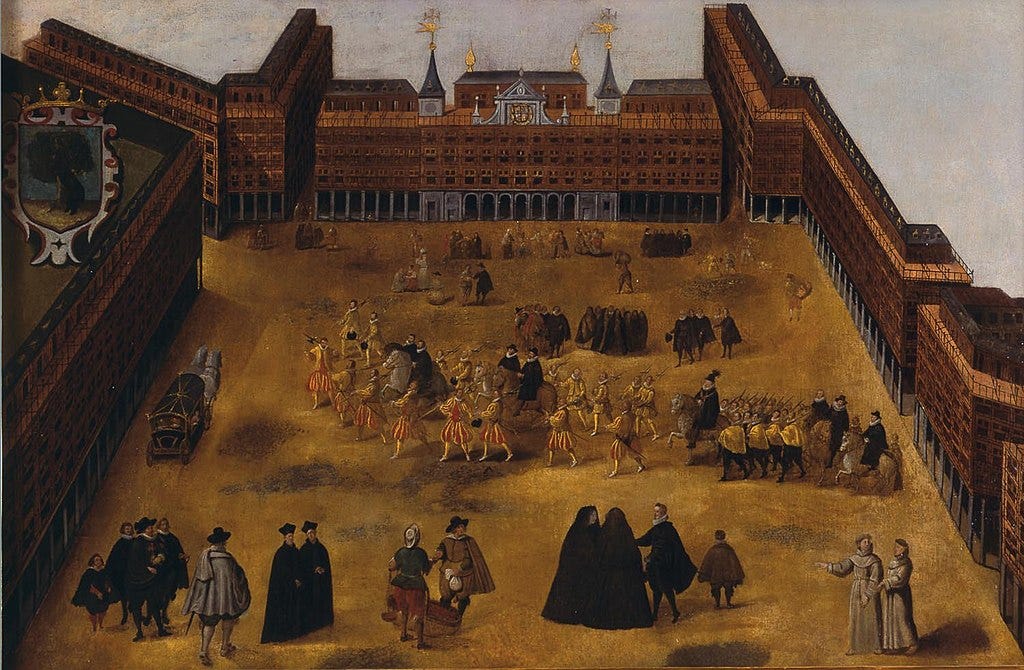
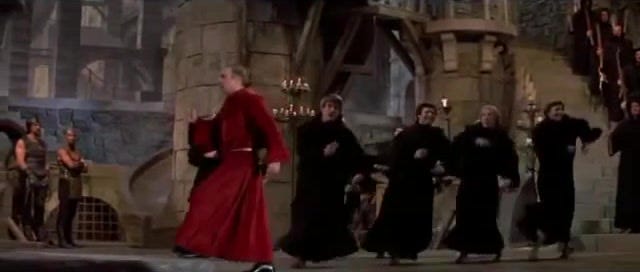



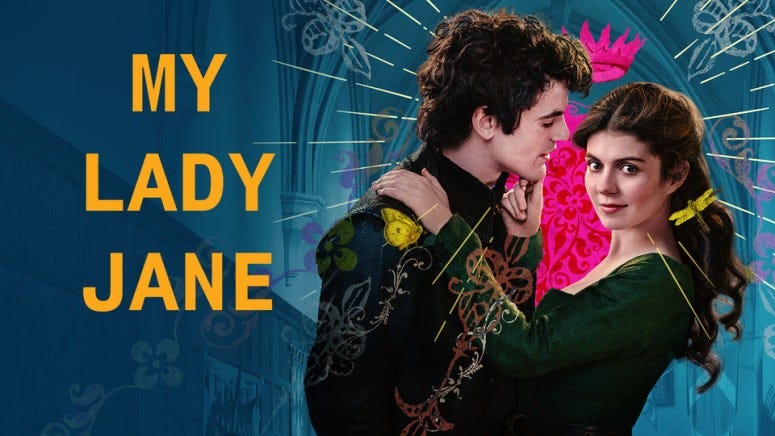
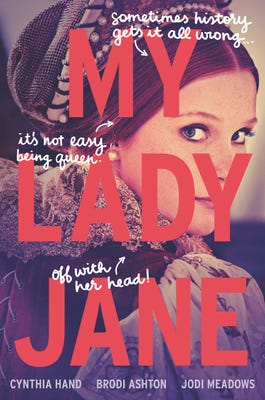
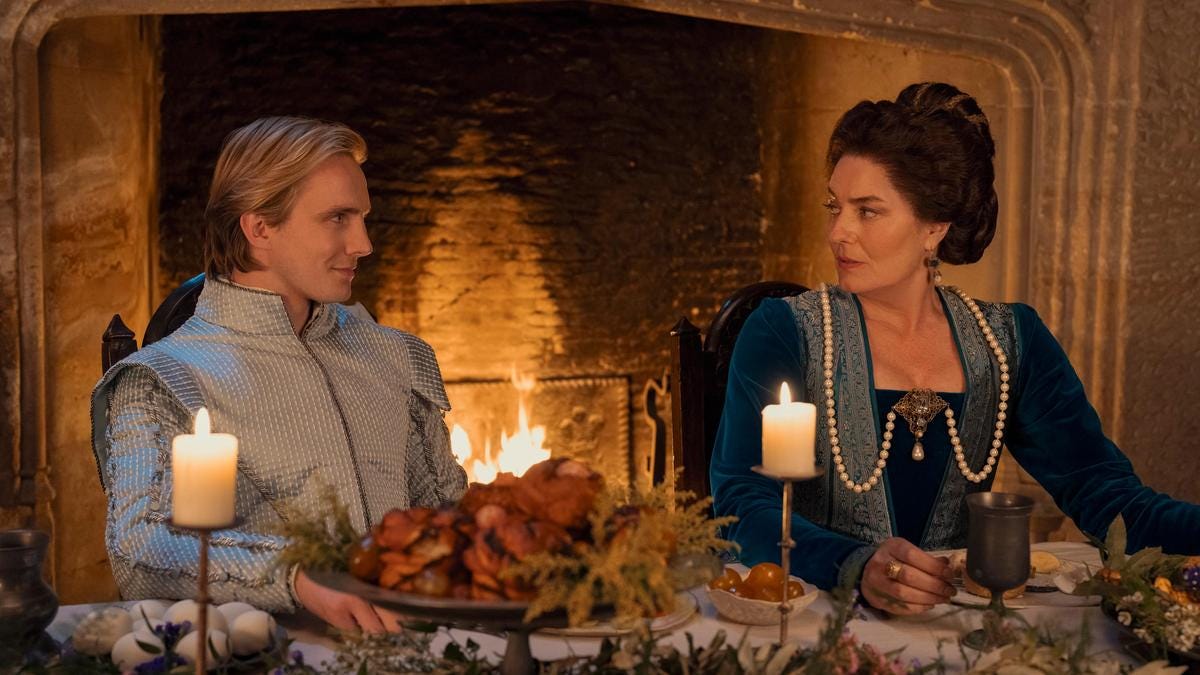
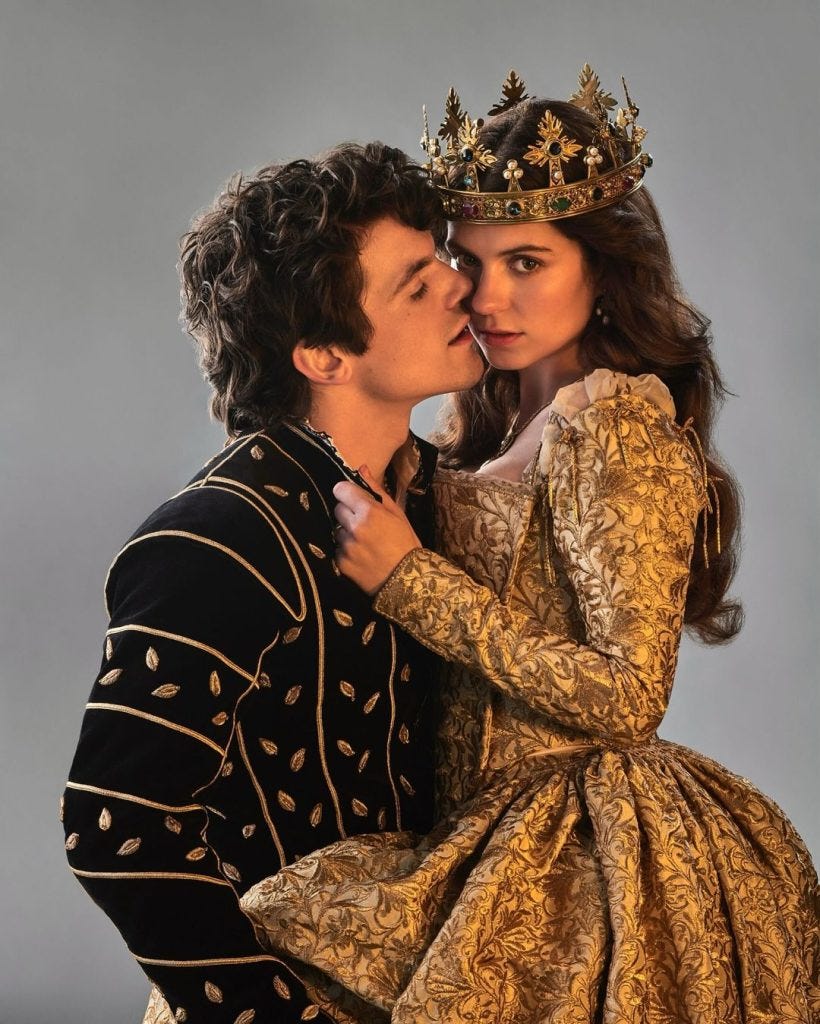

I’ve thought for a while now that the unwillingness or inability to take religion seriously is maybe the biggest flaw in the fantasy genre.